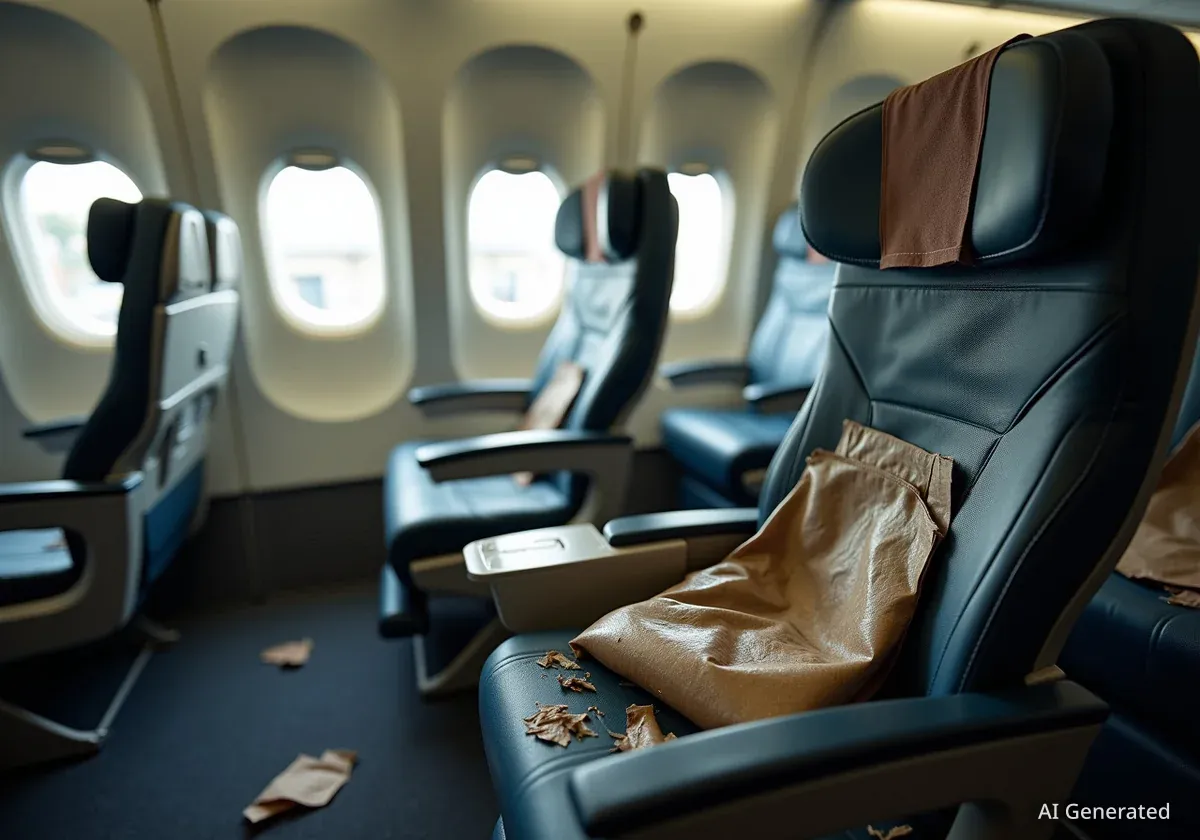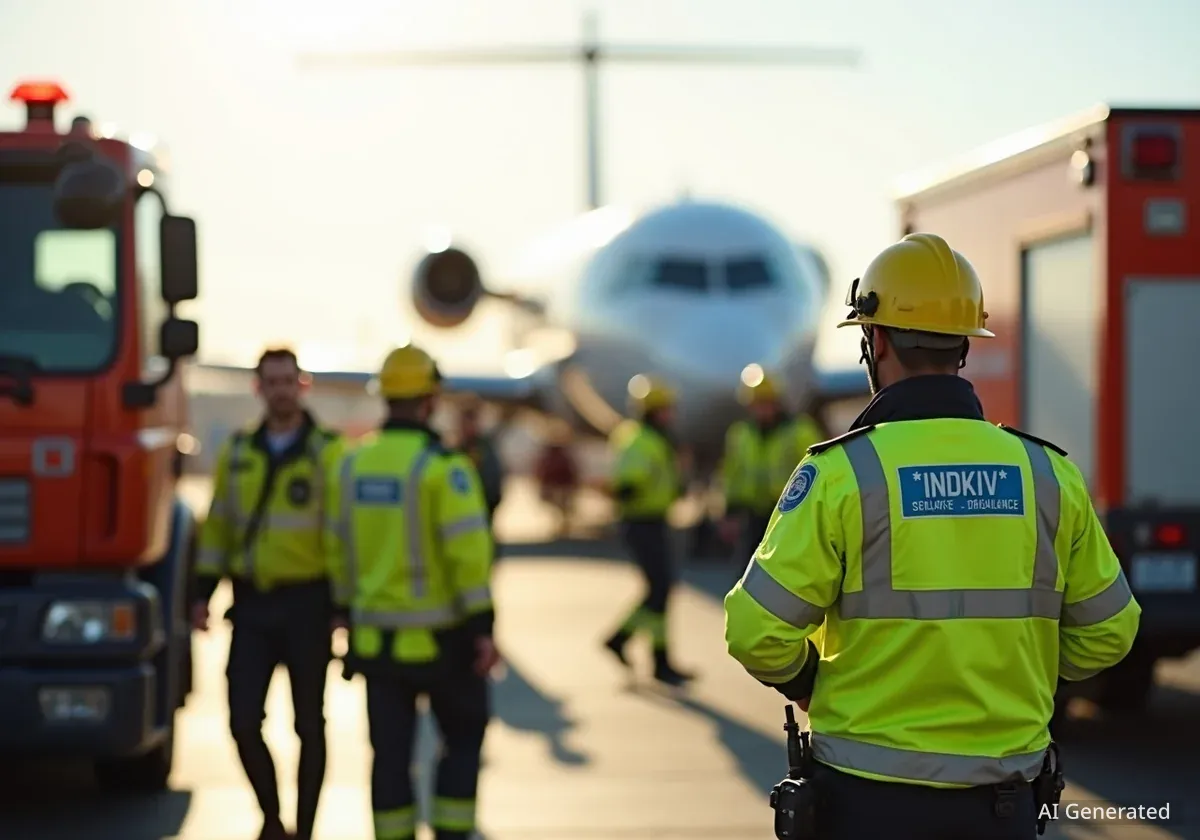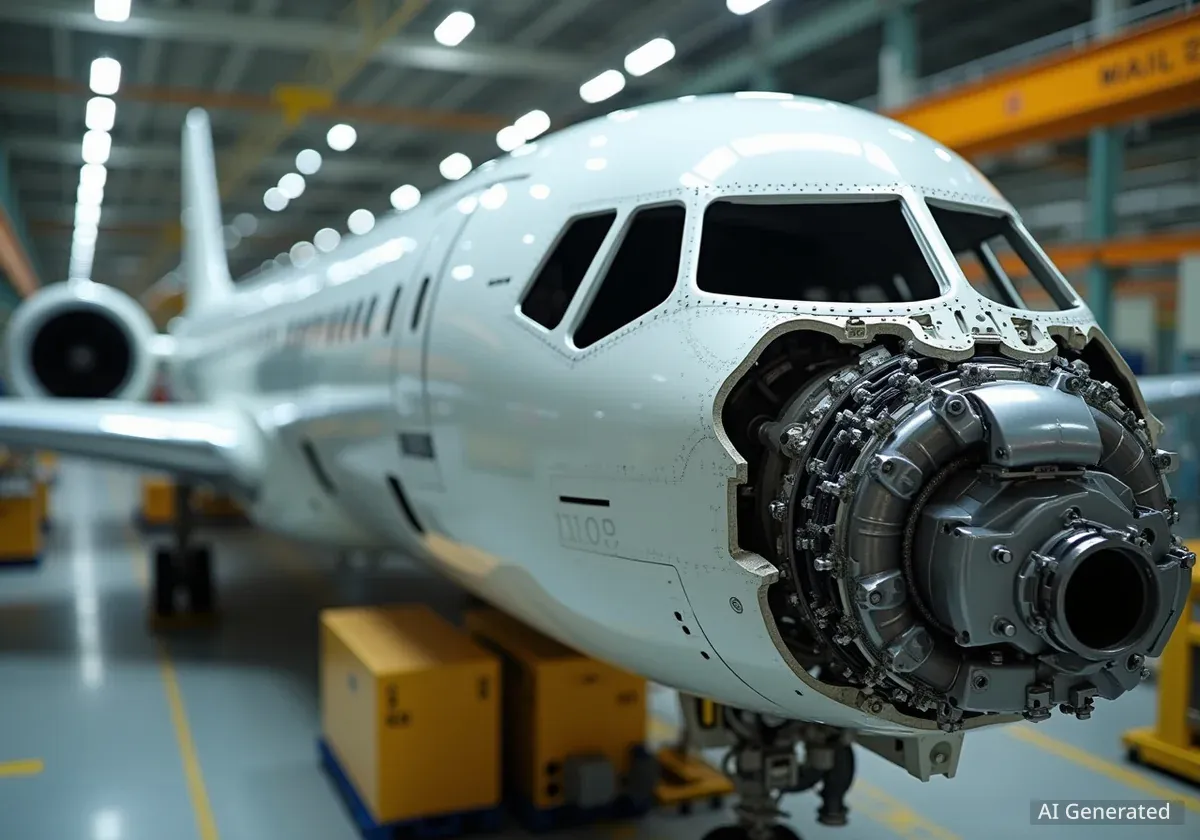United Airlines recently faced multiple public complaints regarding passenger service and aircraft conditions. Reports on social media platforms highlighted issues such as unsanitary cabin conditions, contaminated lounge food, and damaged aircraft interiors. These incidents occurred over a short period, drawing attention to the airline's operational standards.
Key Takeaways
- Passengers reported unsanitary conditions on an aircraft.
- Food safety concerns emerged from a United Club lounge.
- Aircraft interior damage was observed and shared online.
- Customer service interactions were also criticized.
Aircraft Interior and Cleanliness Issues
On October 10, 2025, a passenger identified as Jose shared an image on social media. The image showed a seat with what appeared to be vomit on its side and on the entertainment screen. Jose stated that he reported the issue to a gate agent upon landing. However, he felt the agent was not focused on his complaint.
This incident raises questions about pre-flight cabin checks and cleaning protocols. Passengers expect a clean environment, especially during air travel where close quarters are common. The lack of immediate resolution further contributed to the passenger's negative experience.
"The seat was disgusting, with what appeared to be vomit on the side of the seat and on my screen. When I landed, I reported the issue to the front desk agent, but they seemed more focused on personal conversations than on assisting customers. I'm disgusted by the experience."
— Jose, United Airlines Passenger
Damaged Aircraft Features
Another passenger, using the handle 'Minced Mags,' posted a photo on October 10, 2025, showing a loose window panel on a United aircraft. The image depicted a gap allowing visibility into the aircraft's internal structure. This raised concerns about structural integrity and passenger safety.
According to the passenger, the window "wiggles like a tooth." Such issues can be alarming for travelers and highlight the importance of regular maintenance checks. Aircraft components are designed to be secure for safety and comfort.
Fact: Aircraft Maintenance
Airlines conduct routine maintenance and safety checks on aircraft. These checks are designed to identify and address issues like loose panels or damaged seating. Regular inspections are critical for ensuring passenger safety and operational reliability.
United Club Lounge Experiences
Beyond inflight issues, United's ground services also faced scrutiny. On October 11, 2025, a social media user named 'Cornpop' criticized the United Club at San Francisco International Airport (SFO) Terminal F. The post described the lounge as "an embarrassment," noting that "everything [was] worn down and dirty throughout."
Airport lounges are often marketed as a premium experience, offering comfort and amenities before flights. Reports of dirty and worn-down facilities can detract from this perceived value. This affects customer satisfaction, especially for those paying for lounge access or holding elite status.
Food Safety Concerns at Newark Airport
Further food-related issues emerged from the United Club at Newark Liberty International Airport (EWR). On October 10, 2025, a passenger named 'ders' shared an image of a contaminated meal. The passenger stated they found an unwanted item in their food.
In response to the complaint, United reportedly offered a $15 meal voucher. The passenger described the incident as "absolutely vile" and expressed concerns about food handling. They advised others against flying with the airline due to the risk of illness on international flights.
Context: Food Service Standards
Airlines and their catering partners must adhere to strict food safety and hygiene standards. Contamination incidents can lead to health risks for passengers and damage an airline's reputation. Proper handling and immediate corrective action are essential.
Broader Industry Context and Airline Performance
These incidents come amid ongoing discussions about airline service quality. Airlines often aim to differentiate themselves through premium offerings. However, such efforts can be undermined by basic operational failures.
For example, a passenger on an American Airlines flight recently questioned vomit near their seat. This suggests that cleanliness challenges are not isolated to a single carrier. Airlines globally are under pressure to manage operational costs while maintaining service levels.
Leadership Statements and Market Position
United Airlines CEO Scott Kirby has previously stated that American Airlines cannot catch up to United. Such statements highlight a competitive environment within the industry. However, passenger experiences directly influence public perception and market standing.
Airlines compete not only on routes and pricing but also on the overall travel experience. This includes the condition of aircraft, the quality of lounge services, and the responsiveness of staff. Each passenger interaction contributes to the airline's brand image.
- Customer Service: Reports indicate a need for improved staff responsiveness and problem-solving skills.
- Hygiene Standards: Cleanliness in both cabins and lounges is a recurring concern.
- Maintenance: Visible damage to aircraft interiors suggests potential gaps in routine inspections.
A comment from a passenger, Chris Hinrichs, on October 13, 2025, further illustrates maintenance issues. He reported a broken tray table in first class on a flight from RSW to IAD. The flight attendant's response was, "don't worry, we won't be serving a meal on this flight anyway." This indicates that maintenance issues might be common, even in premium cabins.
The aircraft had spent the previous night at EWR, where repairs could have been made. This suggests a potential lack of proactive maintenance or insufficient time allocated for repairs between flights.
Future Aircraft Deployments and Route Strategy
United's strategy includes deploying A321XLRs for longer routes and Boeing 737 MAX aircraft for shorter European leisure routes. The A321XLRs are considered 'premium' aircraft. However, some analysts suggest that neither the A321XLR nor the 737 MAX is ideal for the longer, thinner routes currently operated by Boeing 737s.
Route planning and aircraft selection are critical for airline profitability and passenger experience. The suitability of aircraft for specific routes impacts factors like fuel efficiency, cargo capacity, and passenger comfort. This strategic planning must also align with maintaining high service standards.
The overall picture points to ongoing challenges in the aviation industry. Airlines must balance operational efficiency with consistent service quality to meet passenger expectations. Addressing issues reported by customers is key to maintaining trust and competitive advantage.





